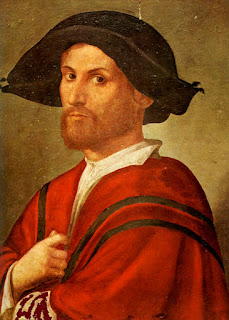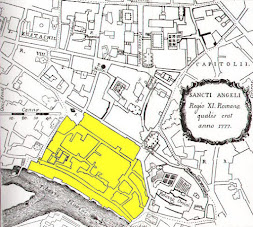Killing still unsolved after 500 years despite plenty of suspects
 |
| Giovanni Borgia was the brother of Cesare and Lucrezia |
There was no shortage of possible suspects but the murder was never solved. The grief-stricken Pope launched an immediate murder inquiry, but mysteriously closed down the investigation after just one week, leading to speculation that the perpetrator could have been a member of Giovanni’s own family.
The case has fascinated historians and writers for the last 500 years and been the subject of many books, including Mario Puzo’s historical novel, The Family, and it has featured in many films and televisions programmes.
Giovanni was born in Rome in either 1474 or 1476 to the then Cardinal Rodrigo Borgia and his mistress, Vanozza dei Cattanei. He is thought to have been the eldest of the children fathered by Pope Alexander VI with his mistress, but this is disputed.
He was married to Maria Enriquez de Luna, who had been betrothed to his older half-brother, Pedro Luis, who had died before the marriage could take place.
Afterwards, Giovanni was made 2nd Duke of Gandia, Duke of Sessa, Grand Constable of Naples, Governor of St Peter’s and Gonfalonier and Captain General of the Church.
He and and Maria had twins, a boy and a girl, Juan and Francisca, and another daughter, Isabel, who was born after the murder of her father.
 |
| Painter Ettore Roesler Franz's impression of the Via Rua in Ghetto as it make have looked in 1880 |
On the way back to the Papal Palace, he stopped and dismissed his retainers, saying he was going to visit his mistress. He took with him only his valet and a masked man whose identity has remained unknown, but who was believed to have been visiting Giovanni for about a month before the murder. Giovanni then rode as far as the ghetto, where he ordered the groom to wait for him until a certain time, when he was planning to return to the Papal Palace. He then rode off with the masked man.
The next morning his horse came back without its rider and with one of the stirrups cut off. The groom was later discovered in the same area dying of his wounds.
Pope Alexander ordered a search for his son. A witness was found whose information led to the discovery of Giovanni’s body. He had seen five men throw a corpse into the river next to the fountain at the Hospital of Jerome, where refuse was often disposed of.
.jpg) |
| Giovanni's brother, Cesare, was among the suspects |
Although the killers have never been identified, there are three main theories about who was responsible:
First, the killer could have been either his brother, Cesare, or his brother, Gioffre, as both Giovanni and Cesare were having a relationship with Gioffre’s wife, Sanchia.
Second, the murder could have been carried out on behalf of Antonio Maria della Mirandola, whose house was near the Tiber. Giovanni had kept mentioning that he had dishonoured the daughter of one of the ancient Roman della Mirandola family.
Third, the murder could have been an act of revenge by relatives of Virginio Orsini, the head of a family hostile to the Pope, who had died in a prison in Naples.
In fictitious accounts of the murder written subsequently, the villain has sometimes been identified as Cesare, and sometimes as Lucrezia, with the help of one of her lovers.
 |
| The ghetto is the area highlighted adjoining the river Tiber |
The Roman ghetto (Ghetto di Roma) was established in 1555 in the Rione Sant’Angelo close to the Tiber and the Theatre of Marcellus. It occupied the area bordered today by the Via del Portico d'Ottavia, Lungotevere dei Cenci, Via del Progresso and Via di Santa Maria del Pianto. Apart from brief periods, the ghetto was controlled by the papacy until the capture of Rome in 1870. Despite the area being subject to frequent flooding from the river, Jews were required to live in the ghetto, which was a walled quarter with its gates locked at night. It was established by a papal bull - an edict - issued by Pope Paul IV in 1555, which also revoked all the rights of the Jewish community and prohibited Jews among other things from owning property and practising medicine on Christians.
.jpg) |
| Michelangelo's Moses is part of a huge funeral monument |
The Church of San Pietro in Vincoli - St Peter in Chains - which was near the villa where Vanozza dei Cattanei was living, is a minor basilica best known for being the home of Michelangelo’s Moses. It is on the Oppian Hill near Cavour metro station, not far from the Colosseum. It was first built on old foundations in 432-440 to house the relic of the chains that bound St Peter when he was imprisoned in Jerusalem. San Pietro in Vincoli was the church of the powerful Della Rovere family and the Moses sculpture is part of a massive funeral monument for Pope Julius II - born Giuliano della Rovere - within which the Pope was buried.
Also on this day:
1837: The death of Giacomo Leopardi, poet and philosopher
1968: The death of Nobel Prize-winning poet and engineer Salvatore Quasimodo



.jpg)

.png)
.png)


.jpg)